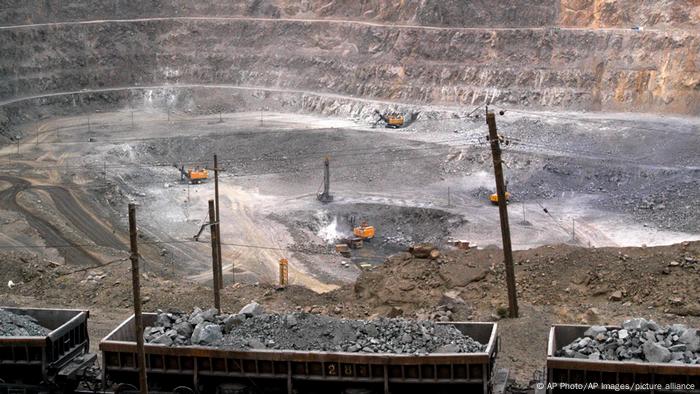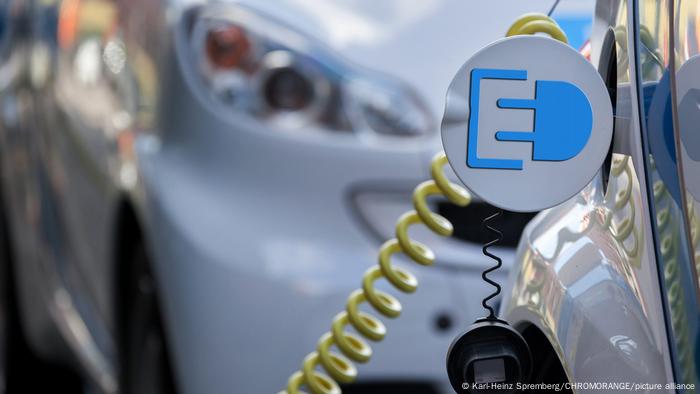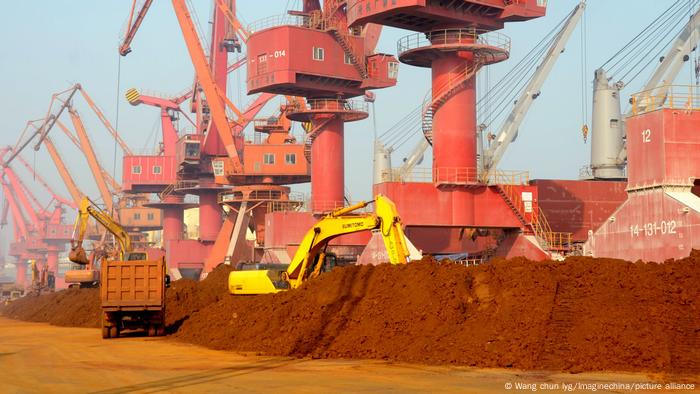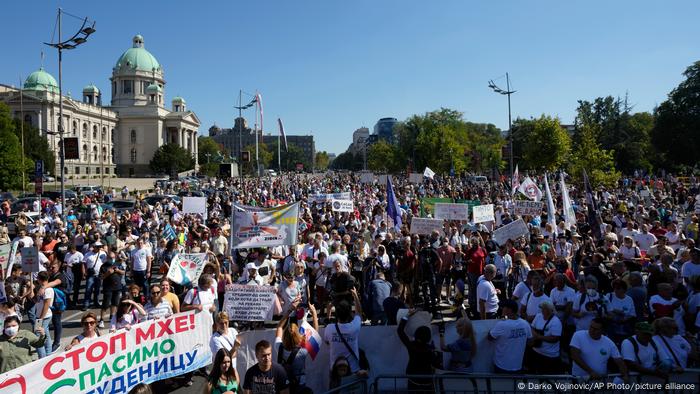The EU's risky dependency on critical Chinese metals
The EU needs critical metals and rare earths to succeed in its energy transition and digitization drive. But most of the materials come from China.

Europe has imported large amounts of rare earths from China
Even as the EU tries hard to cut its energy supplies from Russia, the bloc is also heavily dependent on China when it comes to the industrial metals and rare earths that the bloc needs for wind turbines, electric vehicles, solar cells and semiconductors.
Given the increased speed of digitization and energy transition, demand for such raw materials is bound to rise further, but mining is concentrated in only a handful of regions in the world.
This means that in the future China could cause a big headache for the European Union. The Asian country exports many raw materials that are indispensable for future-oriented industries. On top of that, China plays a pivotal role not just in mining, but also in the processing of materials, says Siyamend Al Barazi of the German Mineral Resources Agency (DERA).

The production of EV batteries requires a lot of cobalt and other raw materials that the EU has to import
China's de facto monopoly
The European Union's dependency on metal imports is somewhere between 75% and 100% depending on the metal. Of the 30 raw materials that the EU classifies as critical, 19 are predominantly imported from China. The list includes magnesium, rare earths and bismuth where China has a de facto monopoly, providing up to 98% of the supplies needed in the EU.
This dependency could even increase in the future. The EU reckons that cobalt demand alone will rise fivefold by 2030. Lithium demand is expected to increase 18-fold by 2030 and 60-fold by 2050 on the back of the bloc's e-mobility campaign.
Political leverage
Back in 2010, some analysts said China was using its raw materials monopoly to exert political pressure when Beijing limited the export of rare earths, seeing prices jump. The move was later looked into by the World Trade Organization and China had to reverse its export cuts.
"Europeans including Germans gained more trust in China actually willing to play by the rules," said Raimund Bleischwitz from the Leibniz Centre for Tropical Marine Research.
There's no guarantee, though, that Europe's demand will be fully covered in the future. A March report by the German business daily Handelsblatt said experts in the Chinese Ministry of Industry and Information Technology debated in January 2021 whether to stop the export of rare earths to the US.
Europe shouldn't be surprised if China reduces raw materials exports. In its latest five-year plan, Beijing made it clear that exports would be cut to satisfy growing domestic demand.
China hopes to become climate-neutral by 2060 and needs more critical raw materials for itself. In a strategic move, China has already secured vital imports from Africa and elsewhere through large-scale investments and long-term contracts.
Instead of exporting raw materials, China aims to become a global technology leader in key industries.

There's always a danger of China suddelnly reducing its rare earth exports
Germany in a bind
Germany has been trying for years to diversify its raw materials imports. Rare earths are now being imported not only from China, but Brazil too. In 2010, it set up the German Mineral Resources Agency, which constantly monitors the availability of resources worldwide.
"We've been pointing to a higher market concentration for 10 years now, said DERA's Al Barazi.
"There's a kind of attention cycle among industry leaders and politicians," added Bleischwitz. "The topic always comes up when prices rise as they did over the last 18 months — action plans are hammered out, but when the prices start falling again, the topic falls from view and nothing is done anymore."
DERA research shows that Germany continues to rely largely on Chinese imports, including raw materials and processed goods.
China seems willing to embark on more sustainable production methods and do more for environmental protection. Domestic inspections in the magnesium-producing industry toward the end of last year resulted in the shutting down of a number of plants across China. As a result, the price per ton of magnesium jumped from $2,000 to $10,000 (€1,850 to €9,250).
According to Al Barazi, the same thing happened in the silicon-producing industry in China, leading to reduced overall output
Increased mining in Europe?
The autumn of 2020 saw the founding of the European Raw Materials Alliance, which is meant to enhance supply security and diversify imports for Europe's industries. In addition, the EU aims to increase its own mining and processing activities.
"There have been endeavors for years in the EU to support domestic mining activities," said Al Barazi. Some of the critical materials can indeed be found in Europe, but many countries don't want any dirty mining activities in their vicinity.
Spain just experienced public protests against plans to open a lithium mine in Estremadura. Such protests also occurred in Serbia and Portugal.
There are lithium deposits in Germany too. Following a lengthy period of looking for investors, lithium mining is slated to start in the German state of Saxony in 2025.
The financing of new mining projects remains a huge issue, says Al Barazi, pointing to a lack of venture capital. If you just consider the price of the raw materials in question, European mining is not competitive, given that China for instance subsidized mining heavily in the 1990s and has laxer environmental requirements, leading to lower prices.

In September 2021, thousands of activists in Serbia protested against a planned lithium mine
Recycling part of the solution?
One thing's for sure: Europe cannot fully meet its demand with mines of its own. Part of the solution could be to reuse more materials through more efficient recycling procedures and focus more on a circular economy. But there are limits to this.
As long as overall demand keeps rising steadily, recycling can only mitigate the problem in Germany, according to Peter Buchholz who runs DERA. "Industry can only recycle the stuff that's actually available," he noted. "Some 40 years ago, copper demand amounted to 10 million tons a year, today it's over 20 million tons."
In order to absorb the shock of possible export cuts, many EU nations, the US and Japan have tried to accumulate considerable reserves of natural resources.
When debating the risks of Germany's dependency on China, "you must not forget that China is also dependent on imports from Germany," said Bleischwitz. "Before the COVID-19 pandemic, China actually imported more raw materials from Europe than it exported, for instance forestry products and processed metals."
This at least goes to show there's a mutual dependency.
This article was first published in German.
No comments:
Post a Comment